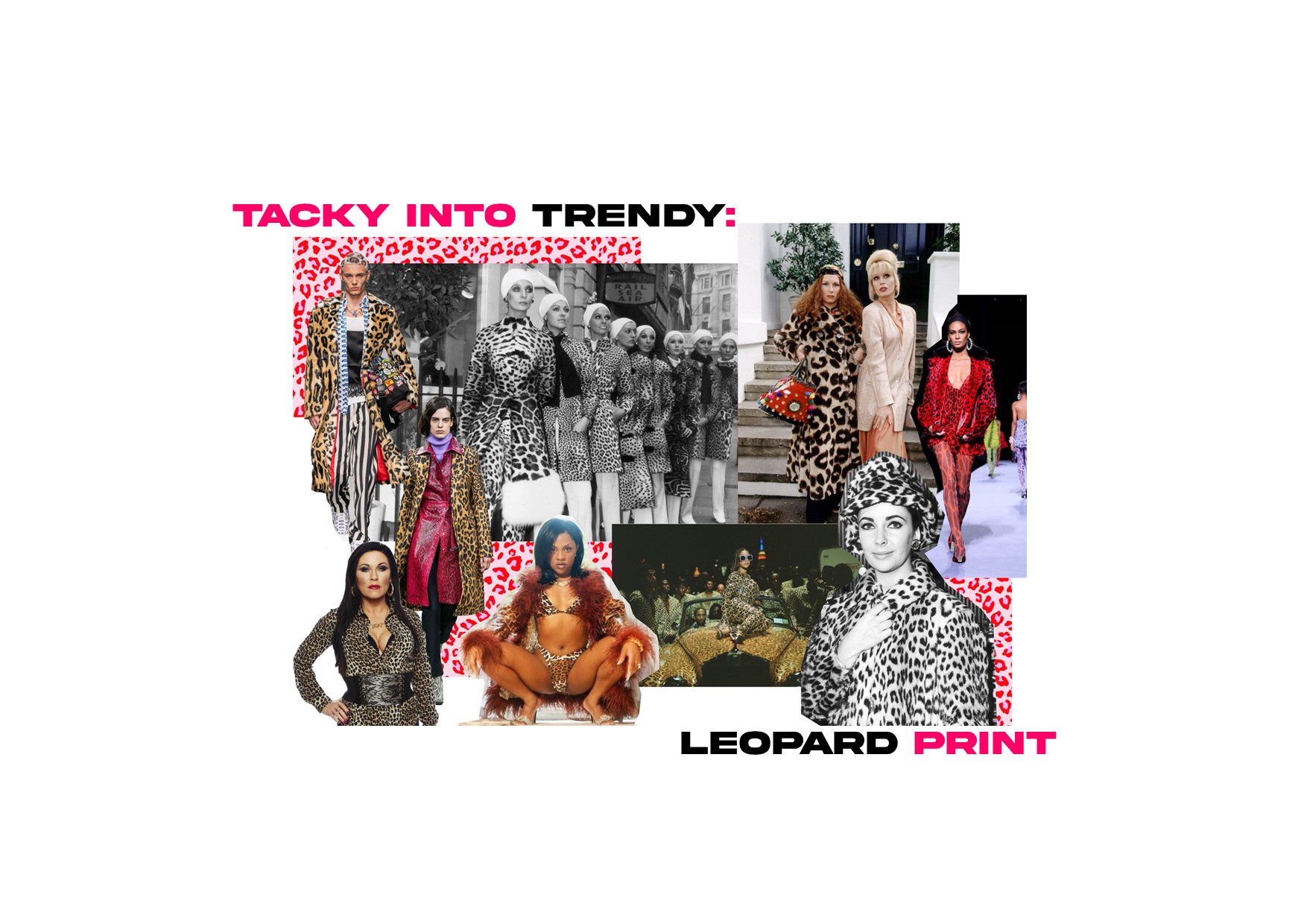
Within fashion there are trends that shine quick and bright then are hated two months later. Then there is the timeless trends, the ones that always work no matter when they pop back into the timeline. They evoke different emotions. One trend that people loath or love is the leopard print. This print evokes a reaction. From it’s arousing, sophistication or possibly trashy and trampy reputation.
The leopard itself is a large carnivorous predator, in the big cat family. They are extremely graceful and just like it’s close relations, the lions, jaguars and tigers, it is beautiful. However, it’s their spotted print that has wrapped itself around the world, booming in popularity the last year. But it is engrained in fashion history, dating back as early as the Egyptians, where an Egyptian princess is depicted wearing a leopard gown on an Egyptian stele.
It was not until the 1920s, with popular stars like Josephine Baker helping to make this print a sign of luxury and status, that leopard print was properly introduced in fashion. Flapper girls also loved real animal print fur coats. This coat highlighted you as a woman of expensive taste and these fur coats are still extremely popular today. However, faux is most accessible as killing animals for their skin is no longer socially acceptable. The Roaring 20s woman was a powerhouse of sensuality and fun, yet often were bashed by others for having this ‘let loose’ attitude. This mentality is engrained in the leopard print essence.
In 1947 Christian Dior adapted the print for his Spring/Summer 1947 collection and the trend flourished. Especially from the 1960s and onwards with matching accessories, coats and bottoms being available. Today, respectable fashion houses such as Versace, Yves Saint Laurent, all put various colours and layers of leopard print down the runway. High-street brands also sell items of the trendy print at a cheaper price, even going into our homeware, bedding, slippers and so on.
Arguably we get aroused and excited by leopard print, as much as people might think nothing of it, we have physical reactions to things without even realising. Jo Weldon, author of 2018 book ‘Fierce: The History of Leopard print’, points out that many people’s pupils dilate when they see the print.
“It’s the same kind of dilation that you see in both arousal and fear,” she says. “Scientists have called it the ‘misattribution of arousal’ when you see something you’re afraid of and you have the same physical sensations and you associate it with arousal or excitement and not just fear.”
This is potentially what draws so many people into the print, we unconsciously associate it with sex appeal. However, the leopard print has an ever-changing reputation due to this. It can be regarded as expensive, sensual, and powerful but then on the other hand can be seen as cheap, tarty and crass.
The majority of the British public will know who Kat Slater is. She is a classic character on the British soap ‘EastEnders’ most likely to be shouting on the streets wearing leopard print upon leopard print. Her character is meant to be a sultry, loudmouth. For example, one of her well-known scenes is where she yells “I became a total slag!”. Yet you grow to love her as a viewer. Her trashiness is meant to be shown through her costume and she is rarely seen without her leopard print coat, showing how the print can be used with negative connotations.
However, you then have acclaimed American singer Beyoncé in her 2020 film ‘Black is King’ perched upon a leopard print car, in a skin-tight leopard print leotard, surrounded by men in matching leopard print suits. This image grabs you in, you can feel how expensive it is and how Beyoncé is portraying power. This is fashion’s biggest contradiction, is leopard tacky or trendy?
The reason leopard print is a constant trend is because it arguably suits every person, compliments every skin tone and can be dressed up or down easily. At the end of the day, every human wants to feel confident in what they wear and leopard print allows you to do this. Just like how a leopard is seen as beautiful and strong, humans have a thought process that they will gain these attributes when the print is worn. Whether you think it is tacky or trendy depends on your unconscious thoughts, but no matter what it is a tool of confidence.